OCTOBER 21, 2021
(Updated October 7, 2024)
Halloween
Tips for fun and safe festivities.
In a few days' time, the border between the world of the living and that of the dead will be blurred, giving rise to a variety of celebrations. To mark the occasion, we present an overview of the origins of Halloween in Canada. We'll also give you some tips on how to celebrate this holiday while taking care of your health and safety.
Halloween in Canada
A fusion of Celtic and Christian traditions
Although there is no certainty as to the origins of Halloween, many historians assume that it originated with the Celtic peoples of ancient Europe. Canada's Halloween tradition is said to have its roots in a Celtic festival called Samhain (pronounced “SOW-in”).
According to the Celts, the night of October 31 marks the division between the cycle in which the days are longer than the nights, and that in which the nights are longer than the days. During this period, the separation between the world of the dead and the living lessens, giving the souls of the dead, ghosts and demons the opportunity to pass over to the side of the living. In this tradition, certain practices, such as dressing up in costume and making offerings, are said to ward off and soften evil spirits.
Its arrival in Canada dates back to the mid-19th century, with the arrival of a large wave of Irish and Scottish immigrants. Samhain traditions were then combined with those of the Christian feast of All Saints' Day. Indeed, the term Halloween derives from All Hallows Eve.
The age-old tradition of
Jack-o'-lanterns
This tradition comes from an ancient legend that tells of a mischievous, drunken man named Stingy Jack, who outwitted the Devil twice rather than once. Legend has it that the Devil descended from Hell to punish him for his unacceptable behavior. Unfortunately, being cunning, Jack managed to keep the Devil prisoner by surrounding him with crosses. To be freed, the Devil had to promise Jack that he would never bother him again. Later, when the man died, Heaven didn't want him and, in Hell, neither did the Devil, since that was his promise. The story goes that ever since, Jack has wandered between the worlds of the living and the dead. So people created Jack-o'-lanterns to ward off wandering souls like Jack. Carving pumpkins, putting candles on them and lighting them protects your home from evil spirits.
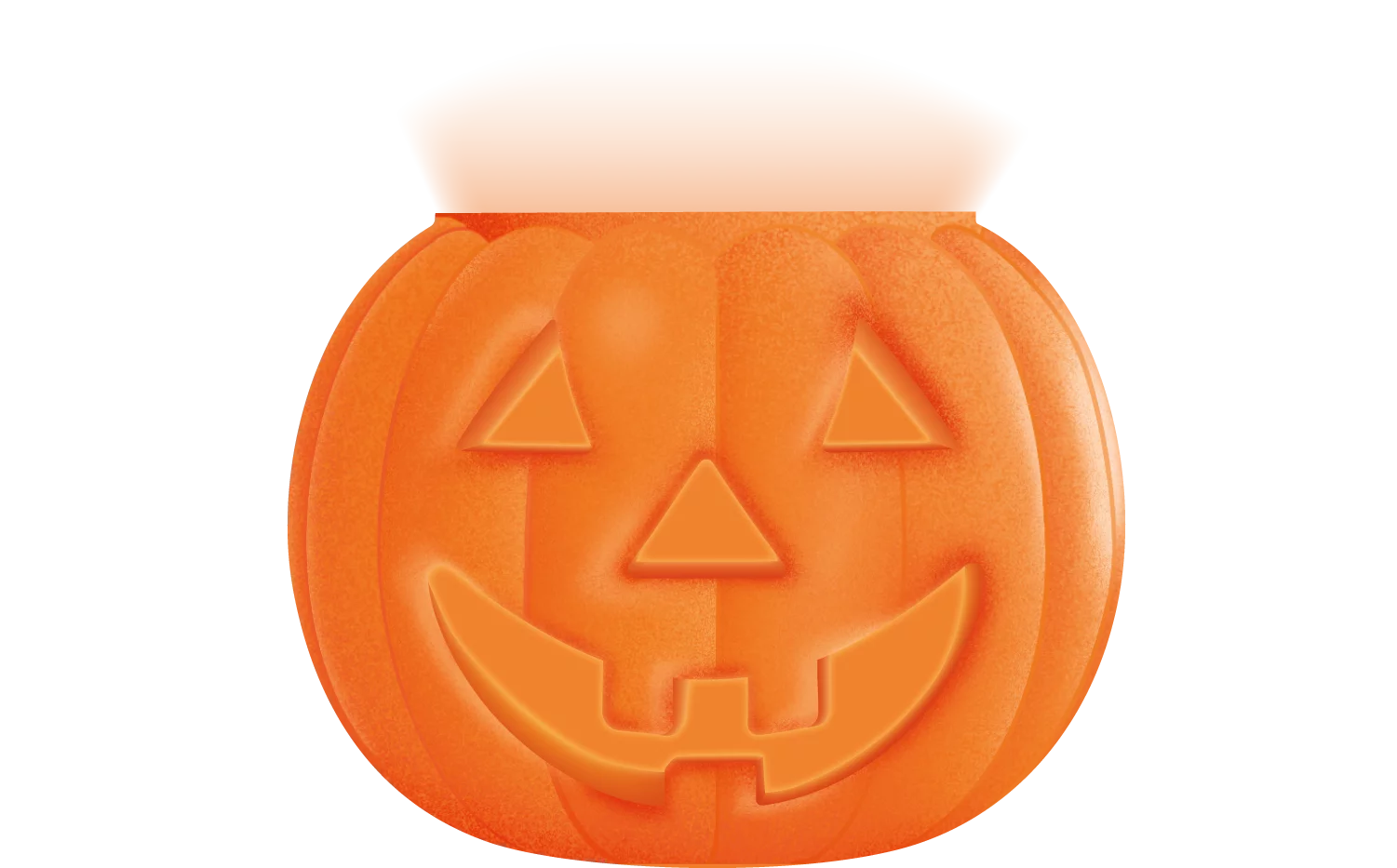
BEFORE YOU START CARVING, REMEMBER THESE IMPORTANT PRECAUTIONS:
1. Use a kit of tools specially designed for this activity to reduce the risk of injury.
2. Prepare your work area and tools well.
Your space should be well lit, and the work surface should be stable and flat. Nothing should be wet or damp, to avoid anything slippery.
3. Carve the pumpkin before emptying it.
This way, you'll avoid the temptation to put your hand inside during carving. You may, however, want to trim the pumpkin a little at the base to ensure stability.
4. Carving must be done by an adult.
Of course, this doesn't mean that children can't participate. They can help empty the pumpkin, draw the face and decorate it.
A FEW TIPS TO MAKE SURE YOUR HALLOWEEN DOESN'T TURN INTO A HORROR MOVIE
Whether it's pumpkin carving with the family, trick-or-treating, partying or driving around on Halloween night, it's important to take certain measures to ensure everyone's safety. These simple precautions will help you celebrate Halloween more safely!
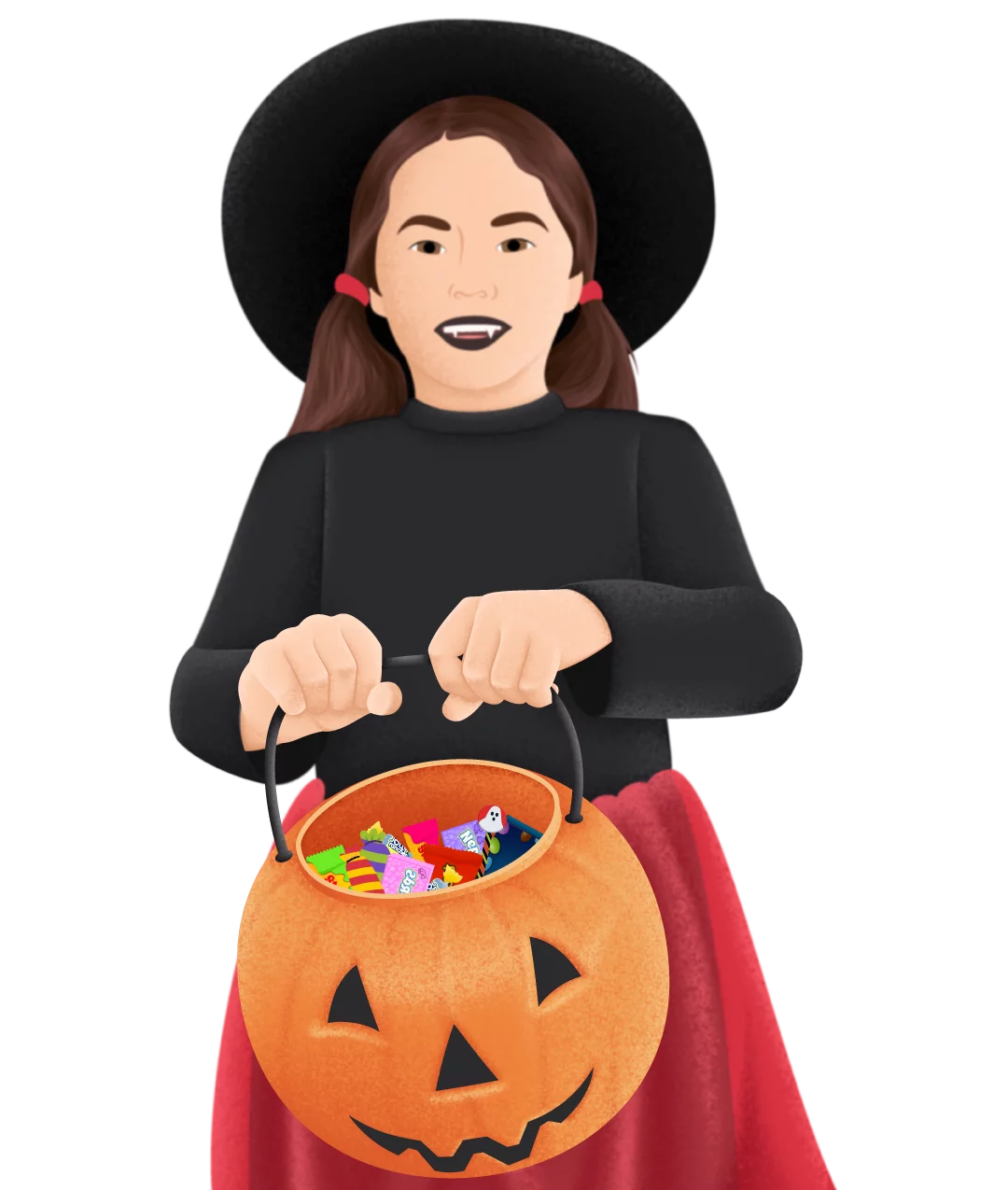
TRICK-OR-TREATING
1. Make sure the costumes allow good vision and movement.
• Opt for make-up to avoid obstructing vision. However, be sure to use hypoallergenic and non-toxic make-up for children.
• Make sure you're visible to drivers by adding reflective strips to the costume.
2. Remind children of pedestrian safety rules.
• Be vigilant at all times.
• Cross carefully at crosswalks and intersections.
• Never cross between parked cars.
3. Warn your children not to eat sweets until they have been examined on their return home.
GIVING OUT CANDIES
1. Make sure the front of your house is well lit.
• Dark lighting contributes to the eerie atmosphere of your decorations. However, visitors may find it more difficult to see their way around, increasing the risk of incidents such as a fall.
2. Clear the way so visitors can move around without the risk of tripping and injuring themselves.
3. Keep pets out of the way in another room.
• Children's excitement, constant coming and going, bright accessories and loud noises can stress your pets and may cause reactive or unusual behavior.
• You should also be careful to keep sweets and wrappers out of their reach. For your companions, candy consumption can cause serious health problems.
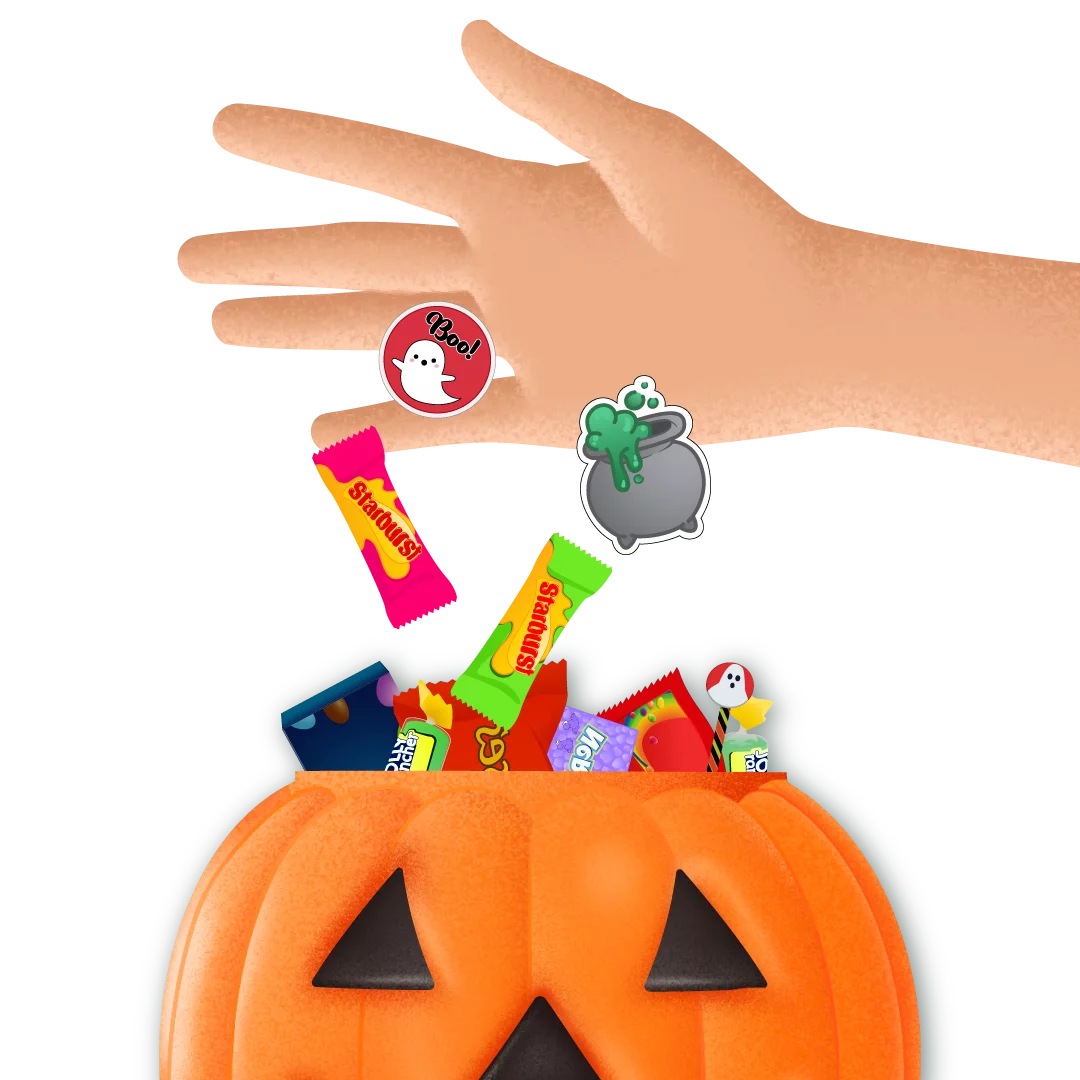
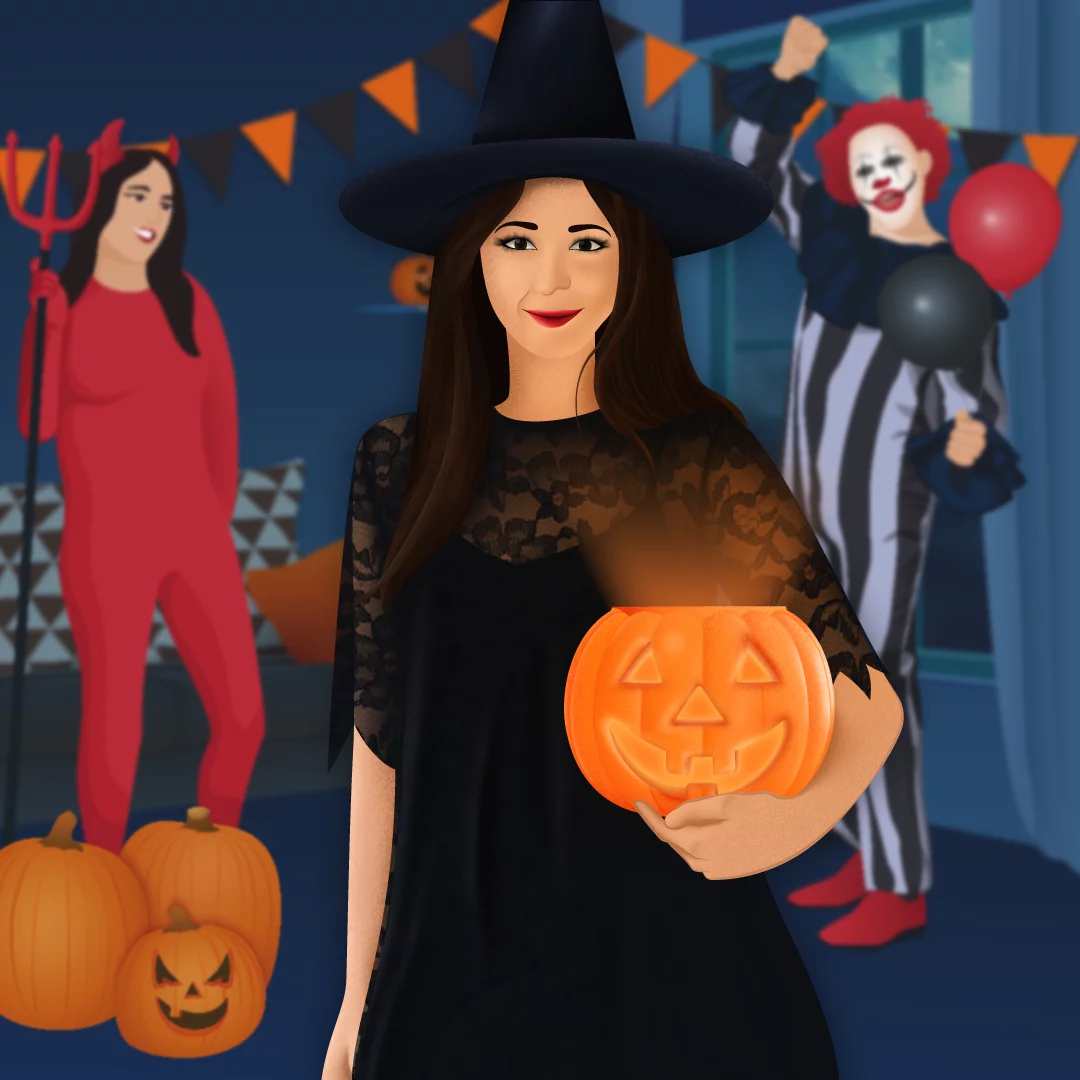
Festivities
1. Of course, the previous tips for the safety of your pets also apply in this context.
2. Clear the space as much as possible.
• This way, you can prevent guests from tripping and injuring themselves. For example, if you have a coffee table in the living room, move it into a bedroom.
3. Avoid total darkness.
• For example, dim the lights in the main room and turn on those in the main passageways, such as the one leading to the toilet).
4. Use small battery-operated lanterns to light your pumpkins, rather than real candles.
5. Use a drive-home service, such as Tolérance-Zéro, to get your guests home safely.
• Impaired driving is NEVER a good idea.
Driving
1. Be even more attentive and alert than usual.
• Be patient and drive slowly to avoid, for example, a collision with a child who has forgotten the safety rules and ventured to cross the road between two parked cars.
2. Avoid distractions. For example, wait until you've stopped to change the song or answer the phone.
• Although this is a rule that should be practiced at all times, it is all the more important during this event, when many children are roaming the streets.
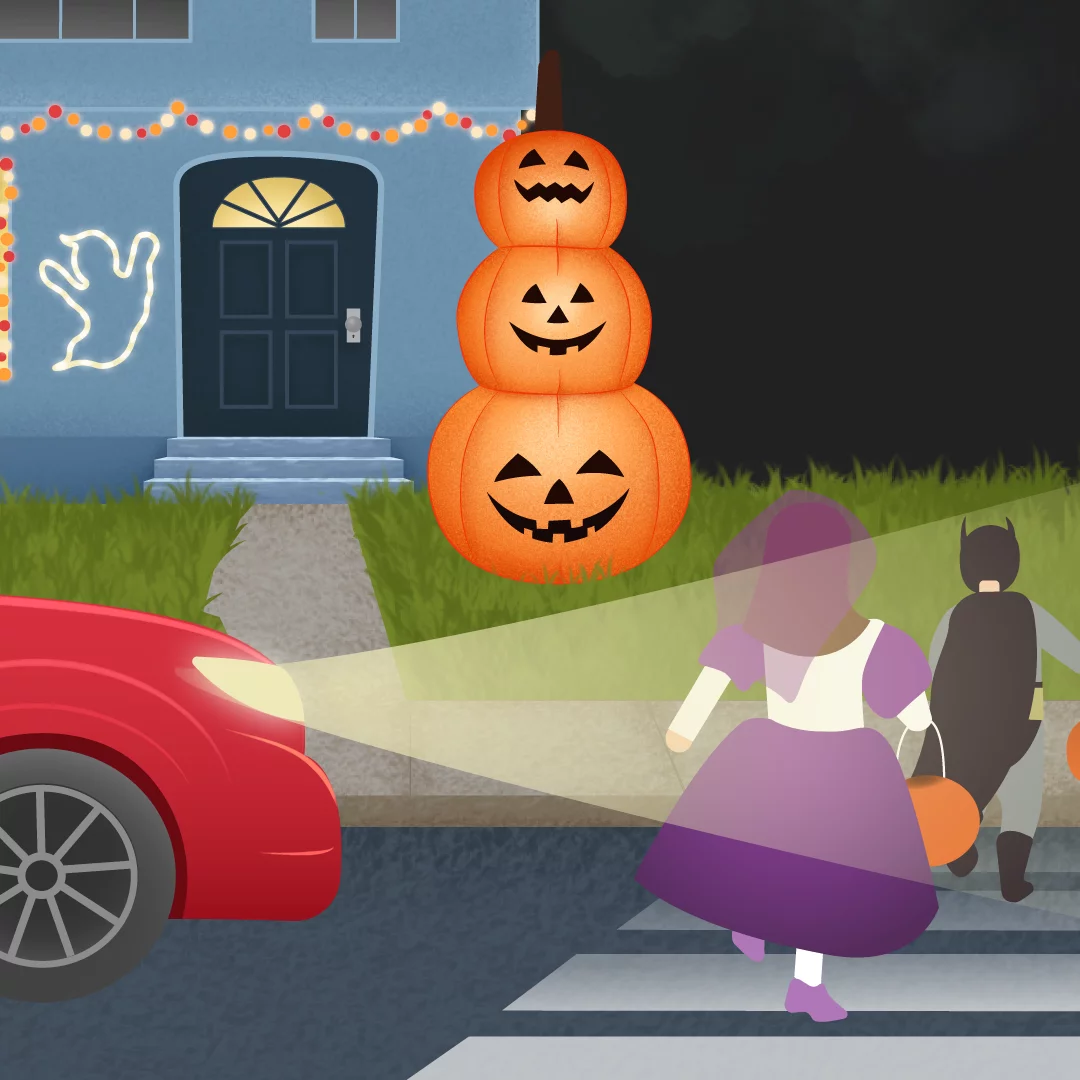
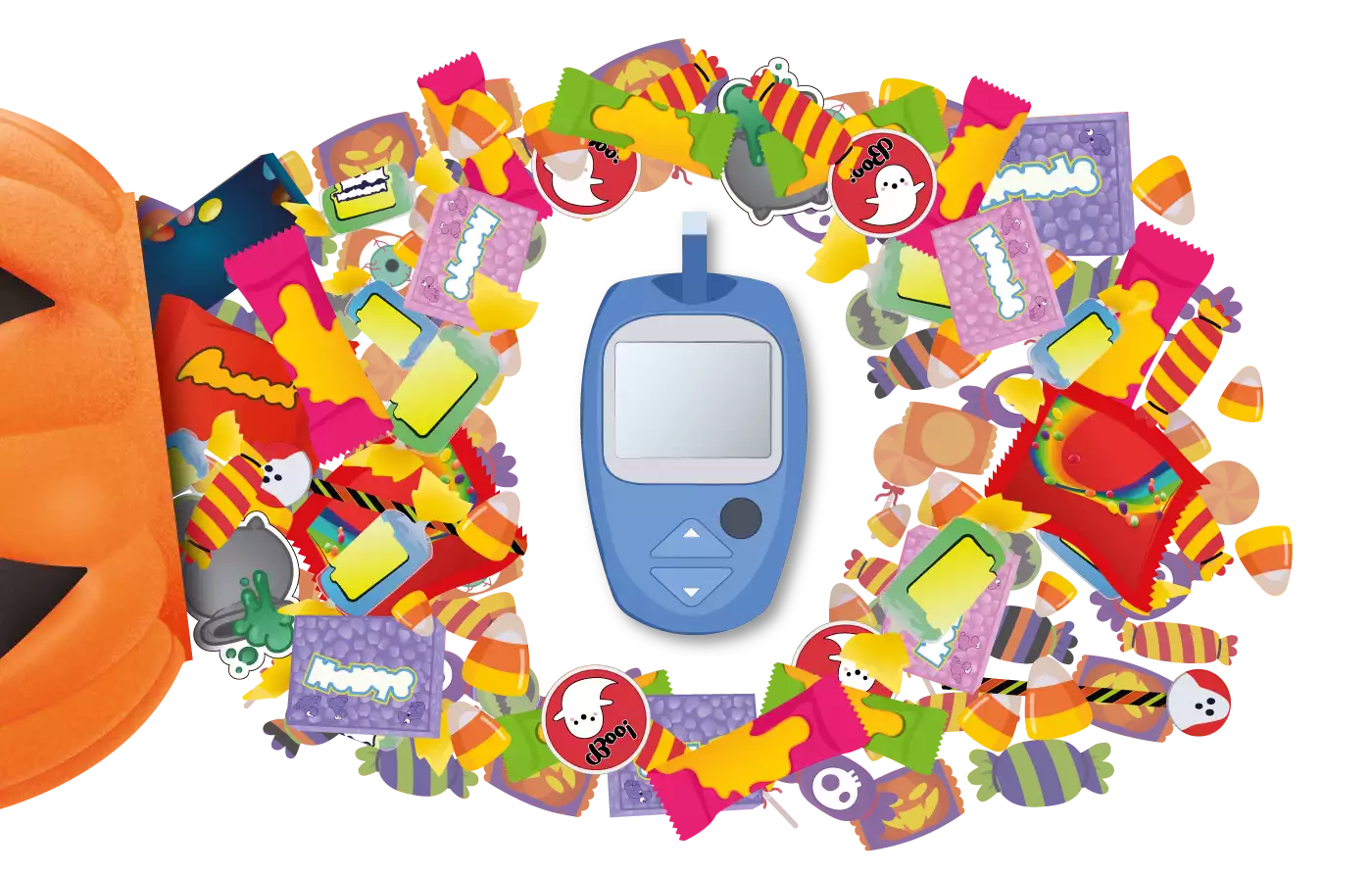
Diabetes
Although Halloween is a spooky holiday, a diabetes diagnosis shouldn't be among the scary things you encounter that day. For young and old alike, proper preparation can help you enjoy this freakishly fun event.
1. Make sure that the adults in charge are well informed about ;
• how much candy can be eaten, and which treats should be avoided ;
• the right amount of insulin for the circumstances;
• the signs of hypo/hyperglycemia, and what to do if such a situation occurs.
2. Avoid cold and low blood sugar by bringing warm clothing.
3. Make sure the pump and glucometer are within easy reach.
4. Plan for the possibility of eating treats during and after Trick or Treating.
Teal pumpkin project
A remarkable initiative to make the traditional Halloween harvest more inclusive for allergic children!
Created in Tennessee in 2012, it was in 2015 that the initiative took root in Canada.
The concept is simple: place a turquoise pumpkin in front of your house to indicate that you'll be offering non-edible surprises on Halloween night.
For example, you could offer :
• stickers ;
• funny pencils ;
• rings decorated with a spider ;
• or bubbles.
Of course, that doesn't rule out the possibility of giving candy to other children as well. In this case, it's best to offer candies free of the most common allergens, in case an allergic child ends up with one of these bags.
According to Allergies Québec, the 9 priority allergens are peanuts, wheat, milk, mustard, nuts, eggs, seafood, sesame and soy.
Also make sure that the individual packaging of the sweets you distribute contains the list of ingredients.
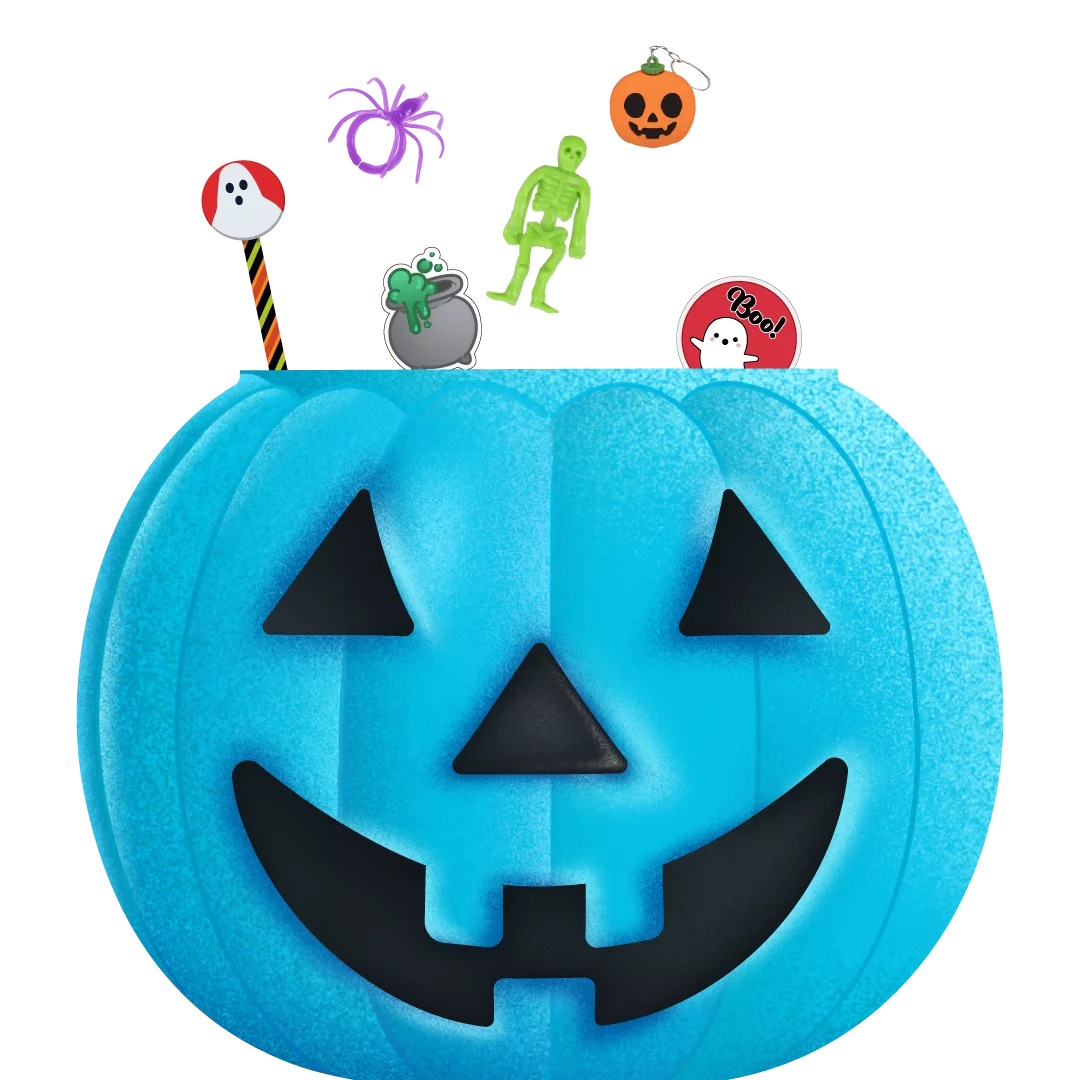
First aid
Essential preparation
The best way to celebrate with peace of mind is to be able to intervene if an incident occurs. Learning the basics of first aid is just a few hours of your time that could make all the difference.
Learn at your own pace with our 100% online training courses!
Written by Laurie Levesque, Content Creator.
Edited, illustrated and formatted by Emilie Bedard, Communications Manager.